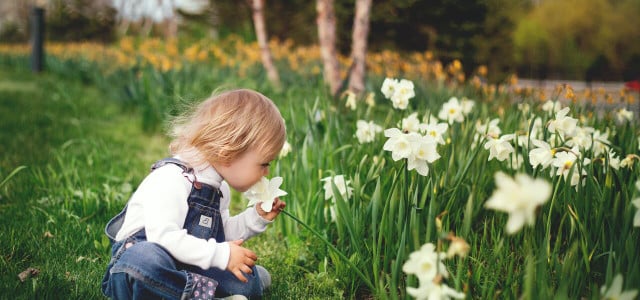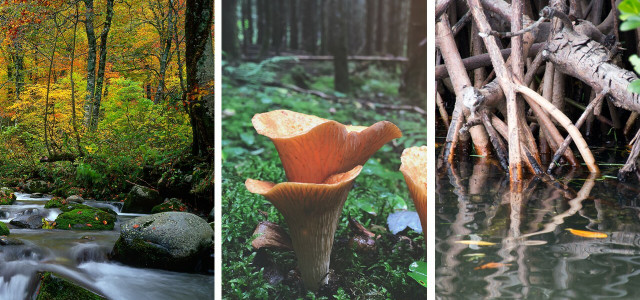Take the power back with some guerrilla gardening. Flower bombs, aka seed bombs, can have positive effects on the environment and terraform urban areas.
Flower bombs, otherwise known as seed bombs, are little, compact orbs or packets of seeds, soil, and clay that are an emerging form of guerrilla gardening; a type of eco-activism and environmental improvement.
Flower bombs are eco-friendly tools made to help with reforestation, urban gardening, or just beautifying unused spaces. They have grown in popularity in recent years as they give activists a chance to restore natural elements to urban areas and revitalize underutilized locations.
A flower bomb is most effective when thrown or placed in an empty lot or a bleak section of a city. The soil and clay combination is ideal for seed germination since it helps maintain moisture. The bomb’s protective case deteriorates under the effects of rain, sunshine, or natural decomposition, releasing the seeds into the surrounding environment.
Over time, the seeds germinate and, given the right conditions, grow into a colorful and verdant assortment of flowers, herbs, or other plants.
Benefits of Wildflower Bombs

(Foto: CC0 / Pixabay / silviarita)
When people engage in grassroots movements like guerrilla gardening and sew flower bombs throughout their communities, several benefits arise:
- Urban environments become more beautiful: By turning unused or derelict spots into areas with plants and trees, the aesthetic quality of urban areas is improved. As newfound gardens flourish, both locals and tourists can rejoice in their beauty.
- Biodiversity is encouraged: Through planting wildflower bombs, guerrilla gardeners help in attempts to preserve biodiversity and restore ecosystems by planting or restoring green spaces in urban areas. Miniature habitats for birds, insects, and other tiny creatures may be created in these areas, and they can also serve to attract pollinators like bees and butterflies.
- Community empowerment By planting seed bombs, local citizens or community groups reclaim ownership of abandoned areas and give them a new lease of life. Working together towards the same aim of improving their community draws people closer together, strengthens social relationships, and promotes teamwork. This kind of solidarity and pride is essential in the future as we work together to combat climate change.
- Local education on ecology is strengthened: An improvement benefit when we consider our previous entry. Environmental challenges, sustainable methods, and the value of urban green areas may all be discussed openly when guerrilla gardeners take to the streets. Promoting environmental stewardship, gardening skills, and the advantages of urban gardening, it offers possibilities for education and involvement with the local community, schools, and organizations.
Flower Bombs, Bee Bombs and Green Grenades: Differences Between Seed Bombs
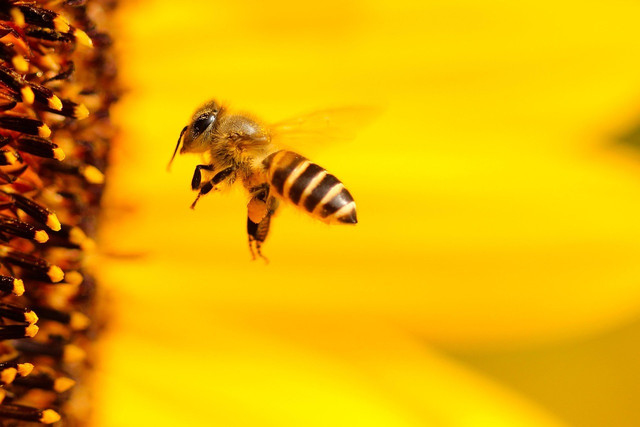


(Foto: CC0 / Pixabay / hansbenn)
Flower bombs, bee bombs, or the adorably titled ‘green grenades’, all refer to variations of seed bombs. Essentially, each one has the same basic idea of enclosing seeds in a protective shell for the purpose of germination and seed dispersal in an urban area. Despite their commonalities, their applications and intended results differ slightly.
Here are the main differences:
- Flower bombs: Flower bombs, also known interchangeably as seed bombs, are clay packets that are loaded with a variety of flower seeds and soil and dropped in urban or unused areas to improve the visual environment. The primary goal is to enhance the surrounding environment by planting flowering plants and bringing pollinators to the area.
- Bee bombs: Bee bombs are a sort of seed bomb designed to foster habitats that are conducive to bees. They often include seeds for a variety of flowers for bees chosen for their attractiveness and their usefulness as a source of honey and pollen. The goal of using bee bombs is to help conserve pollinator species including honeybees, butterflies, and other important insects.
- Green grenades: These types of seed bombs are intended to rehabilitate damaged landscapes such as abandoned industrial sites or areas with contaminated soil. These seed bombs are designed to help in the cleaning of polluted regions by dispersing a wide range of plants that have been shown to be resistant to or effective at removing pollutants.
How to Make Flower Bombs: Step-By-Step Guide
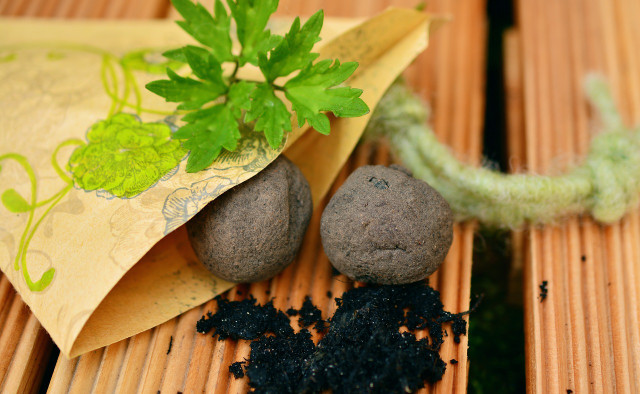


(Foto: CC0 / Pixabay / congerdesign)
Ready to join the seed bomb revolution? Here’s a step-by-step guide on how to make flower bombs:
- Gather everything you need: You’ll need water, a mixing bowl, flower seeds, soil, and powdered clay; all of which you can find at local gardening or craft stores if you don’t have any on hand.
- Add to a mixing bowl: Compost or potting soil and powdered clay should be measured and added to begin. The standard mixture is 5 parts soil to 1 part clay, however, this can be altered to achieve your preferred consistency and texture. Combine the ingredients and mix them together well.
- Add seeds and organic matter: Toss in a handful of flower seeds and other plant material, like dried flower petals or chopped herbs. The seeds you chose will help you grow a wide range of plants. The additional organic matter can be added for both aesthetic and aromatic purposes.
- Carefully pour in water: Gradually, pour some water into the mixture of your bowl and swirl it around. Don’t add too much water all at once or the mixture may become unmanageable and gloppy. The ideal consistency is somewhat damp yet holds together when squeezed.
- Make the bombs: Scoop out a tiny amount of the mixture and roll it into a tight ball, or form it into any other shape you choose. The bombs can be made to any size you choose, but they should be manageable so that you can easily toss them anywhere.
- Let the clay dry: The finished flower bombs need to cure for a couple of days in a dry, airy space before being used. When the clay dries, it forms a protective shell over the seeds. Once hardened, you’re good to go.
- Go for a walk: Now that your seed bombs are ready, you can scatter them in the spots where you want the flowers to sprout. Make sure the flower bombs make ground contact by throwing or placing them on bare soil or abandoned areas.
Tips and Best Practices
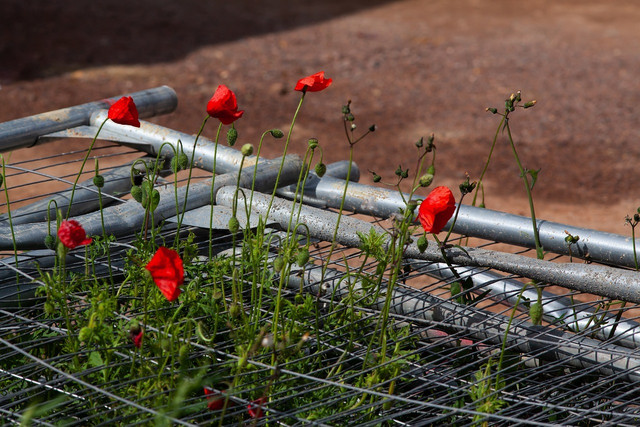


(Foto: CC0 / Pixabay / TheOtherKev)
Before making your flower bombs, do some research. When feasible, choose native plants since they are more likely to survive and benefit local ecosystems. Choosing seeds that are simple to cultivate and require little upkeep have the highest chance of germination.
It is also critical to be discrete while deploying flower bombs. Damage or disruption to existing structures, plants, or property should be avoided. It’s also critical to understand the legal ramifications of guerilla planting in your location.
While guerilla gardening may be considered an act of civil disobedience in certain circumstances, it’s vital to keep in mind that local laws may take issue with your seed bombs, so do your homework first to avoid being on the wrong side of the law.
You may promote positive change while minimizing possible disputes if you follow these ideas and best practices. After all, the entire point of flower bombs is to remind us of our obligation to protect and repair the natural world.
Note: If you’d like to learn more about community guerrilla gardening in your state, two excellent resources are GreenGuerrillas.org and the American Community Gardening Association. Have fun!
Read more:
- 14 Native Fruits of North America (And Where to Find Them)
- Native Gardening for Wildlife: Benefits and Tips For Beginners
- This Is Why You Probably Suffer From Plant Blindness
** Links to retailers marked with ** or underlined orange are partially partner links: If you buy here, you actively support Utopia.org, because we will receive a small part of the sales proceeds. More info.
Do you like this post?







